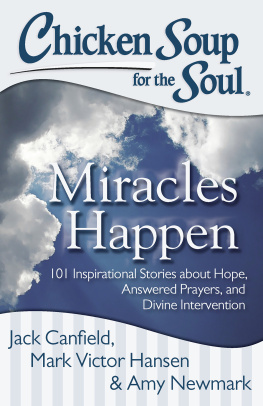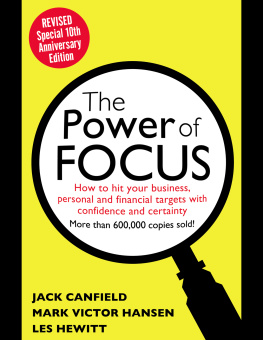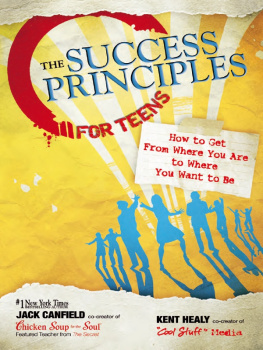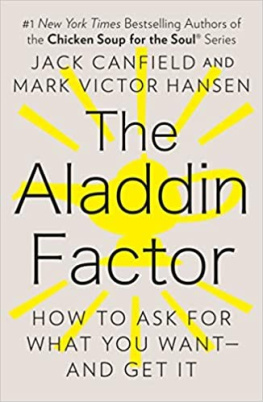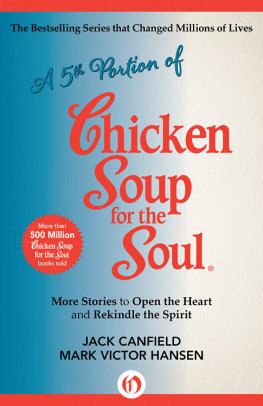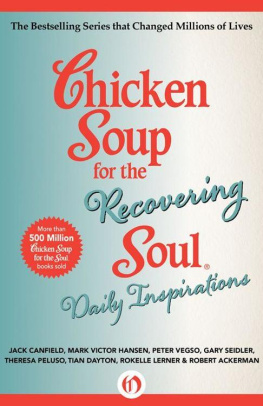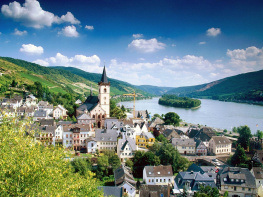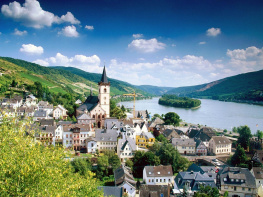
Table of Contents
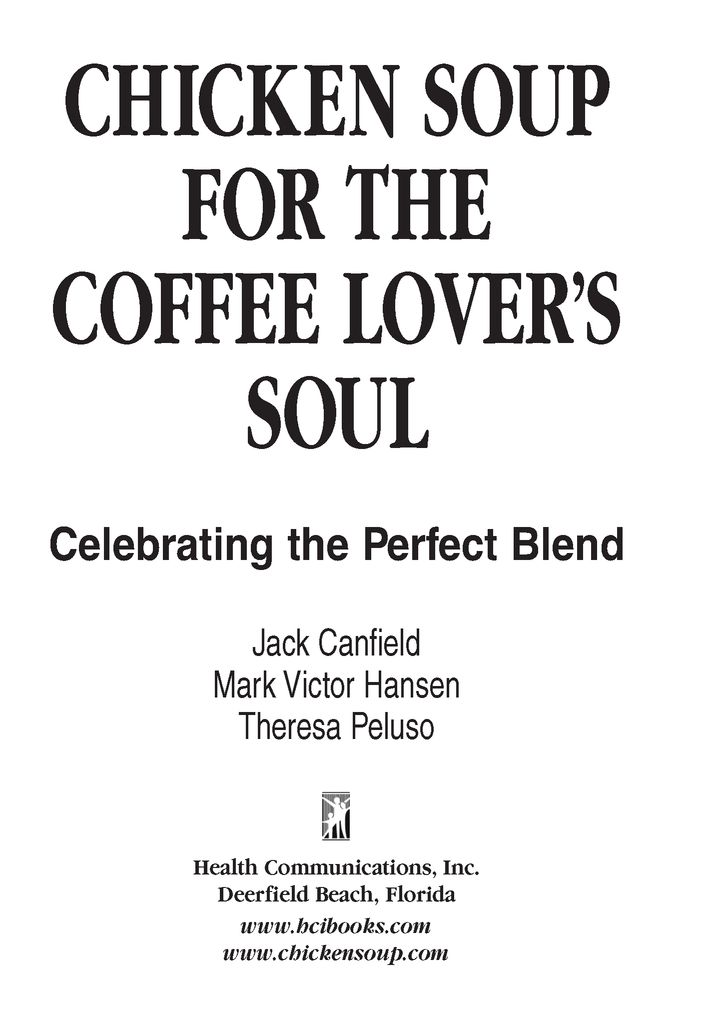
We dedicate this book to
those who romance the bean
in search of the perfect cup of coffee.
Acknowledgments
Compiling, editing, and publishing a book requires the energy and expertise of many people. First, a huge thank-you to our families, who support us with love and encouragement. Thank you Inga, Christopher, Travis, Riley, Oran, Kyle, Patty, Elisabeth, Melanie, and Brian.
Behind the scenes, dozens of talented, enthusiastic staff members, freelancers, and interns keep the wheels turning smoothly at Chicken Soup for the Soul Enterprises, Self-Esteem Seminars, Mark Victor Hansen and Associates, and our publisher, Health Communications, Inc.
The vision and commitment of our publisher, Peter Vegso, brings Chicken Soup for the Soul to the world.
Patty Aubery and Russ Kalmaski share this journey with love, laughter, and endless creativity.
Patty Hansen has handled the legal and licensing aspects of each book thoroughly and competently, and Laurie Hartman has been a precious guardian of the Chicken Soup brand.
Michelle Adams, Noelle Champagne, Dette Corona, Lauren Edelstein, Jody Emme, Teresa Esparza, Jesse Ianniello, Tanya Jones, Debbie Lefever, Barbara LoMonaco, Mary McKay, Dee Dee Romanello, Gina Romanello, Veronica Romero, Brittany Shaw, Shanna Vieyra, Lisa Williams, and Robin Yerian support Jacks and Marks businesses with skill and love.
We appreciate the work of HCIs editorial department, directed by Michelle Matriciani, and the HCI creative team, led by Larissa Hise-Henoch, whose efforts make each book special. And thanks to the rest of the staff at HCI, who for their sheer numbers must go nameless, as they get all of our books into readers hands, copy after copy, with dedication and professionalism.
Readers around the world enjoy Chicken Soup for the Soul in more than thirty-six languages because of the efforts of Claude Choquette and Luc Jutras at Montreal Contacts, The Rights Agency.
Our thanks and appreciation go out to the hundreds of writers who shared their stories about their love of coffee. We enjoyed them all and regret that we couldnt publish each and every one of them.
And thank you to the group of coffee lovers who volunteered to help us select these stories: Nora Chesler, Gerald DeShields, Connie Hrbacek, Sharon Mason, Monica Ott, Juanita Pacito, Ellen Packo, Sallie Rodman, Teresa Schleifer, Franklin Shenkman, Lisa Trentacosta, Cathy Ward, Dave Wilkins and Maria Williams.
Introduction
On all but a few occasions, I have started every day of my adult life with a hot cup of coffeea ritual shared by millions around the world. It takes no effort at all to brew a pot in my modern kitchen with the help of Mister Coffee, but ease and convenience matter little. Ive made my morning cup in the dead of winter while camping in the snow, having backpacked for miles into the mountains to leave civilization behind. I didnt even miss a beat when our area took a direct hit from a hurricane. My priorities are clear: a day must begin with a jolt of java.
The history of coffee is full of legend, myth, politics, and drama. Many assume coffee originated in Colombia or Brazil, but it actually has its roots in Ethiopia, where it was discovered before AD 1000. According to legend, the remote highlands were home to a goat herder named Kaldi. One afternoon, his goats failed to return, and after searching for hours he found them at play in a clearing. Kaldi observed that while some frolicked about, others were happily munching on the little red berries from a shiny green shrub. Curious, he tasted a few berries and felt a surge of energy and exhilaration. Anxious to share his newfound discovery, he scooped up some berries, enticed his goats to follow, and headed for the local monastery. At first, the monks decried the berries as a tool of the devil, but soon found themselves captives of the bean.
African nomads crushed the fruit, mixed it with fat, and used it for sustenance on hunting and raiding expeditions. The fermented husks and pulps were even enjoyed as wine. The Arabians brought the plant to the European continent, farmed it, and created a coffee trade, but the Turks were the first to actually make a drink out of the beans in 1453. The beverage became so popular that Turkish law made it legal for a wife to divorce her husband if he did not supply her with enough coffee to last her the day. When Pope Vincent III tasted coffee, he concluded that it would be a pity to let the infidels have exclusive use of it, and gave it his blessing as an acceptable drink for the Christians.
Coffee was introduced to the United States in the mid- 1600s. Over one hundred years later, when the Boston Tea Party cast tea in an unfavorable light, coffee saw a rise in popularity. Within fifteen years, one pound of coffee in New York was worth as much as four acres of land.
By the late 1800s, coffee roasters and mills were commonplace in most cities. When Hills Brothers began packaging coffee in vacuum tins, the small roasters all but disappeared, leaving a few large companies, with names that we recognize today, to carry on. In 1901, a Japanese-American chemist in Chicago created instant coffee, and just a few years after that, a German coffee importer came up with Sanka, the first decaffeinated coffee, after trying to turn a batch of ruined beans into something useful.
When the United States government banned alcohol during prohibition in the 1920s, coffee sales skyrocketed. Another twenty years, and the U.S. was importing 70 percent of the worlds coffee crop for its domestic consumption. American GIs fought World War II with Maxwell House in their K-rations, while hoarding on the home front was common.
Today, coffee is an intricately-woven thread in the tapestry of our lives. We have taken the brewing and blending to a level far exceeding what Achilles Gaggia could have imagined when he invented the espresso machine in Italy after World War II. The plethora of coffee shops we now enjoy give us easy access to some of the worlds finest coffee, while our local gas stations usually have a pot on the burner for a quick stop-n-go. Our cultural consciousness gave birth to Fairtrade, providing the smallest farmers in the most remote areas of the world the opportunity to benefit fairly from mans dependence on the fruit of this bountiful, deep-red berry. Coffee sells for as little as $3 a pound or as much as $200, allowing every economic strata of society a chance to partake.
The perking of a bubbling percolator, the whoosh of a vacuum-sealed can being opened, and the distinctive scrape of scooping grounds into a filter are sounds embedded, almost at a primordial level, in a coffee lovers soul.
But the more insidious allure of coffee is the aroma. Holding a steaming cup and inhaling the redolence of a vapor of steam conjures up the spirits of traders along ancient spice routes. The aura of its heady, rich perfume coaxes us gently from our dreams at the crack of dawn and tantalizes children with its essence for a dozen years before they can partake of the nectar, then more milk than coffee.
The culmination of our ardor is savoring the flavor. With guarded anticipation, a coffee lover discerns the heaviness or lightness of a new roast. We delight in the sensation of dryness at the back of the mouth, characteristic of a desirable acidity. It is at this time that hints of earth, fruit, nuts, even chocolate, are teased from the sated grind.
Next page

